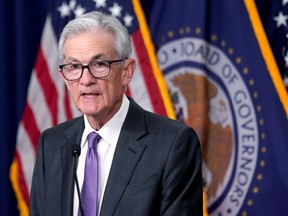The ongoing conflict between Russia and Ukraine has fundamentally altered global energy security paradigms, creating significant structural shifts in commodity markets that will reshape investment landscapes for years to come, according to energy analysts and investment strategists.
With European natural gas prices approximately six times higher than pre-crisis levels and global oil benchmarks maintaining elevated levels despite strategic reserve releases, investors face a complex environment requiring reassessment of both near-term tactical allocations and long-term strategic exposures.
“We’re witnessing a permanent reconfiguration of global energy markets rather than a transitory disruption,” said Johnathan R. Carter, founder and CEO of Celtic Finance Institute. “The confluence of geopolitical tensions, accelerating energy transition initiatives, and supply chain localization efforts is creating a new commodity supercycle with distinct investment implications.”
Russia’s position as the world’s largest combined exporter of oil and natural gas has amplified market dislocations beyond immediate supply concerns. The country accounts for approximately 13% of global oil exports and nearly 40% of Europe’s natural gas supply, creating vulnerabilities that have exposed the limitations of the region’s energy strategy.
Celtic Finance Institute’s commodity research team has developed a three-phase framework for analyzing the market impacts: immediate supply disruption, medium-term infrastructure adaptation, and long-term structural transformation.
“The immediate phase, which we’re currently navigating, is characterized by acute price volatility and significant regional price disparities,” Carter explained. “European natural gas trades at approximately $30 per MMBtu compared to $8.30 in the United States, creating both economic challenges for European industry and strategic opportunities for investors with global exposure.”
Data from the International Energy Agency indicates European industrial gas consumption has declined by 20% year-over-year as energy-intensive industries face margin compression from record prices. This dynamic has accelerated announcements of capacity relocations, particularly in chemicals, fertilizers, and metals production.
“The second-order economic effects of the European energy crisis extend far beyond direct commodity markets,” noted Carter. “We’re identifying investment opportunities in North American and Middle Eastern companies benefiting from production migration in chemicals, aluminum, and nitrogen-based products where energy represents 60-80% of production costs.”
Goldman Sachs commodity research predicts that despite recent moderation, Brent crude oil will maintain a $110-130 trading range through year-end as Russia’s 4.5 million barrels per day of exports to Western markets face ongoing disruption. Meanwhile, Europe’s accelerated LNG import strategy faces physical constraints, with regasification capacity limiting the region’s ability to fully replace Russian pipeline gas before 2025.
Beyond tactical positioning, Celtic Finance Institute emphasizes the structural investment implications of what it terms “the security premium era” in commodities. The firm’s analysis identifies three interconnected long-term themes: supply chain localization, strategic stockpiling, and accelerated but bifurcated energy transition.
“Energy security concerns are catalyzing a fundamental reassessment of supply chain vulnerabilities across governments and corporations,” Carter explained. “Our research indicates capital expenditures for localized supply chains in critical minerals, energy infrastructure, and agricultural commodities will exceed $750 billion globally over the next five years.”
This localization trend extends beyond traditional energy to encompass critical minerals essential for the energy transition. Celtic Finance Institute’s analysis highlights particular supply vulnerabilities in lithium, cobalt, nickel, and copper – all essential components for renewable energy and electrification.
“The renewable energy transition and energy security are increasingly viewed as complementary rather than competing objectives,” Carter observed. “However, this transition paradoxically increases demand for certain critical minerals where supply chains remain concentrated and vulnerable to disruption.”
The firm’s commodity allocation framework recommends a balanced approach across traditional energy, agricultural commodities, and transition metals. For institutional investors, Carter suggests a 5-8% strategic allocation to commodities with tactical flexibility to adjust exposures based on specific supply risk premiums.
“Traditional energy companies with disciplined capital allocation frameworks and reasonable valuation metrics warrant inclusion despite long-term transition questions,” Carter noted. “Our analysis of global energy equities indicates the sector trades at approximately 4.5 times enterprise value to EBITDA, representing a significant discount to historical averages despite record cash flows.”
For agricultural commodities, the Russia-Ukraine conflict has exposed vulnerabilities beyond energy markets. The two countries collectively account for approximately 30% of global wheat exports and are major suppliers of corn, barley, sunflower oil, and fertilizers. Disruptions have driven wheat prices to decade highs, with particular impact on Middle Eastern and North African importing nations.
“The agricultural commodity complex offers both inflation protection and exposure to structural food security themes,” Carter explained. “We’re particularly focused on fertilizer producers, agricultural equipment manufacturers, and food processing companies with pricing power and operational flexibility.”
Morgan Stanley’s commodities team echoes this perspective, noting in recent research that “the world faces not just an energy crisis but a broader commodity security challenge that will drive sustained capital investment across the natural resource spectrum.” The firm projects that commodity producers’ capital expenditure will increase by 35% over the next three years compared to the previous cycle.
Beyond direct commodity exposures, Celtic Finance Institute identifies several adjacent investment opportunities resulting from the security paradigm shift. These include energy infrastructure focused on import/export capabilities, cybersecurity providers specializing in critical infrastructure protection, and defense contractors aligned with increased NATO spending commitments.
“European defense spending commitments have increased approximately €200 billion over pre-conflict levels, with particular focus on energy infrastructure security,” Carter noted. “This represents a structural inflection in a sector that had faced secular growth challenges.”
For private investors, the firm recommends a disciplined approach to commodity exposure given inherent volatility. Rather than direct futures positioning, Carter suggests gaining exposure through a combination of commodity producer equities, infrastructure assets with inflation-linked revenue structures, and diversified commodity funds with active management capabilities.
“The commodity security premium will not manifest uniformly across the complex,” Carter explained. “Systematic evaluation of specific supply chain vulnerabilities, substitution possibilities, and strategic importance will be critical for identifying sustainable investment opportunities versus temporary price dislocations.”
The energy transition dimension adds further complexity to the investment landscape. While European countries have accelerated renewable deployment targets in response to the crisis, they have simultaneously invested in LNG import infrastructure and revived coal generation capacity to ensure near-term security.
“We’re observing a ‘run on multiple speeds’ approach to the energy transition,” Carter explained. “Our analysis suggests investors should maintain balanced exposure across the conventional and renewable energy spectrum rather than viewing these as mutually exclusive alternatives.”
JPMorgan’s long-term energy outlook, published earlier this month, supports this perspective, projecting that global oil demand will remain above 100 million barrels per day through 2030 despite accelerating electric vehicle adoption and renewable penetration. The firm emphasizes that “energy security and transition objectives will advance in parallel rather than in sequence.”
“The reconfiguration of global energy markets represents both challenge and opportunity for thoughtful investors,” Carter concluded. “Those who can distinguish between cyclical price movements and structural changes in the security premium will be best positioned to generate risk-adjusted returns in what promises to be a volatile but strategically significant period for commodity markets.”
www.cfiled.com
service@cfiled.com










